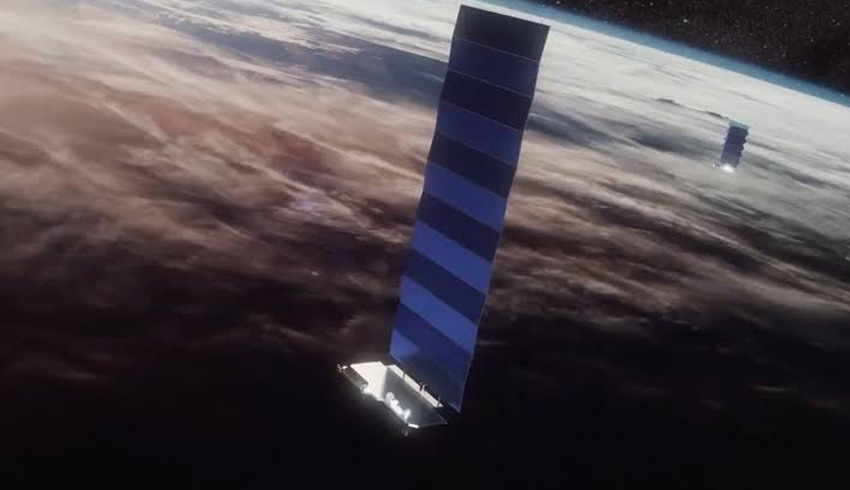
The SpaceX Falcon 9 rocket lifted off from Cape Canaveral on Tuesday Australian time, the third Starlink launch.
That makes 182 satellites launched – 60 launched in May and another 60 in November plus a pair of earlier prototypes – though not all will be part of the final constellation.
That could be as many as 12,000 satellites, providing global broadband internet.
Not all will be part of the constellation – three didn’t work and two will be intentionally de-orbited to test decommissioning procedures.
This latest batch were placed in an orbit at 290 kilometres where the company will perform checks before raising them to their final orbit at 550 kilometres.
As with past launches, SpaceX sought to recover key components of the Falcon to be used again.
The rocket’s first stage landed on the drone ship "Of Course I Still Love You" out in the Atlantic Ocean, completing its fourth launch, including the first batch of Starlink satellites.
However fairing catcher ship Ms Tree was unsuccessful in netting a fairing half after the launch.
One of the latest batch of 60 has been given a darkening treatment to make it less reflective. That’s to answer concerns of astronomers that a large number of small bright satellites will destroy night observation of the stars.
The latest launch means Starlink has overtaken Planet as the world’s largest satellite operator. Planet operates a constellation of 150 observation satellites.
SpaceX plans to deploy the first 1,584 satellites at 550 kilometres to accelerate rollout of its service and also reduce the risk of creating additional space junk.
In that orbit, failed satellites will naturally fall out of orbit due to atmospheric drag within 25 years, the period suggested by NASA and other global space agencies.
SpaceX planned to conduct up to half a dozen launches of Starlink satellites in 2019 but ended up doing just the two.
To catch up, the company is planning up to 24 launches this year. With each carrying 60 satellites, that would take the Starlink constellation to more than 1,500.
Musk said last year that Starlink would be economically viable at 1,000 satellites and 12,000 would be a very successful outcome.
Others are also planning big constellations of small internet satellites, though nothing on the scale of Starlink.
OneWeb is planning for 1,980 satellites, Amazon wants a 3,236-satellite constellation, and Telesat is designing a network of around 300.
Receive the latest developments and updates on Australia’s space industry direct to your inbox. Subscribe today to Space Connect here.









